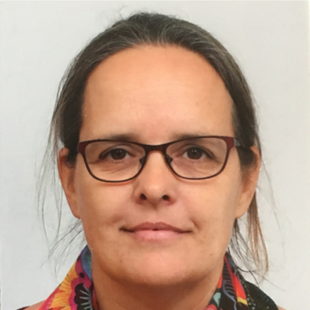19 July 2022 · Global Partnership for Zero Leprosy
Q&A: Meet Emmy van der Grinten, GPZL Leadership Team Member
GPZL Leadership Team member, Emmy van der Grinten, shares learnings from 20 years in the leprosy field.

How did you begin working in leprosy?
In 1991 I travelled to Nepal for three months for an elective period during medical school together with a friend. We spent two weeks at all levels of the health care system, from mobile clinics to university teaching hospitals. This was part of a required rotation for medical students at the Tribhuvan University in Kathmandu. On the last day of my stay in Nepal, we visited Anandaban Leprosy Hospital. It was there that I was moved by the experiences of persons affected by leprosy and decided to make the fight against leprosy the main focus of my medical career. Later, I also worked in the areas of other neglected tropical diseases and tuberculosis.
You lived and worked in Africa for twenty years and have worked closely with National TB and Leprosy Control Programmes. Can you tell us about your experience working with national programmes?
I mainly lived in Nigeria and Ghana and worked short-term in many other countries as well. During my entire career, I worked closely with the National TB and Leprosy Control Programmes. When I started working in Nigeria in 1999, I was the State TB and Leprosy Control Officer in Kaduna State. I was a government employee while being seconded to the Ministry of Health by NLR. While moving up to the national level, I continued to enjoy working with the National TB and Leprosy Control Programmes.
The mandate of international organizations is to support the national effort. Therefore, we need to work closely together with the different programmes right from the start and acknowledge their leadership. While we can support innovations and the gathering of evidence, the country programmes will be responsible for national scale-up.
You have worked on a project focused on the People-Centered Framework for National Strategic Planning. What is this framework and how does it apply to leprosy work?
For the past two years at KNCV Tuberculosis Foundation, I worked on the project, People-Centred Framework for National Strategic Planning. The People-Centred Framework addresses challenges along the entire patient pathway: people not accessing the health care system, people seeking care but not diagnosed or not notified, and people diagnosed and notified but not successfully treated. The project supported National TB Control Programmes by reviewing existing data at the national and sub-national levels and by supporting strategic planning. The project also developed tools to support countries in this planning process. There are many similarities with the action planning approach supported by the Global Partnership for Zero Leprosy. In many countries, TB and Leprosy Programmes are combined or organized in similar ways, and coordination is important.
What do you hope to see the Global Partnership for Zero Leprosy accomplish in the near and long term?
I would like to see more countries embark on a process of action planning which would support implementation at the country level. I hope that the action planning process will provide a solid basis for resource mobilization at the domestic and international levels to ensure that the action plans can be implemented.